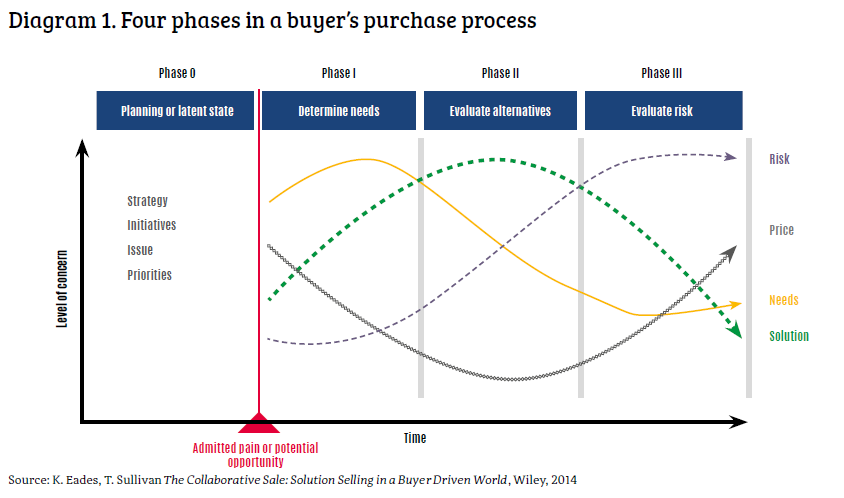Increase your chances of winning a deal
For several weeks, you’ve been trying to arrange a meeting with a senior-level manager in one of your prospect accounts, and finally, after a concerted business development effort, your persistence has paid off. You have managed to schedule an appointment for a conversation next week. This will be the first time you will speak at length with this prospect, and it is critical that the call goes well. Otherwise, the chances of securing a new customer and producing business results will evaporate. What do you do now?

The obvious answer is: prepare for the call. However, only 26 per cent of salespeople are conducting disciplined planning for sales calls or meetings, according to a recent survey by CSO Insights1. They are not using information sources or data analysis tools to understand the person they will be meeting, and the organization for which that person is employed.
Amazingly, the default behavior for most sellers is to gather information about the products or services they wish to sell, and practice their sales pitch, if they practice anything at all. Not surprisingly, research shows an alarmingly low rate of first-call success – buyers report that the majority of meetings with sales professionals (58 per cent) did not provide any value2.
How should salespeople who want to succeed prepare for calls and meetings with buyers?
The power of alignment
The secret to an effective sales call or meeting is alignment: understanding where your buyer is in their journey in evaluating and selecting a potential solution, and then preparing accordingly.
A sales call with an early stage buyer – one who has not yet decided to buy anything, either because they are unaware of any problem or opportunity that may motivate them to do so, or who is aware but does not yet believe it warrants action – requires a different approach from a late-stage buyer who has a clear vision in their mind about what they intend to purchase. Unfortunately, most salespeople tend to treat all prospects generally the same way, regardless of where a buyer may be in their purchase decision process. This often leads to significant misalignment, which leaves the buyer with the feeling that they are not in synch with that seller or, even worse, that the seller is simply not listening and empathizing with their situation.
In our book, The Collaborative Sale3, Keith Eades and I described a simplified model of buyer psychology, which illustrates their concerns as they progress through a buying journey (see Diagram 1).
As the model shows, buyers migrate generally through four phases in their purchase process:
They begin in a latent state, but then recognize a potential problem or missed opportunity if they do not take action.
They then focus on determining their needs or requirements, although they are also somewhat concerned about the potential cost of a solution, too. Buyers do not want to spend more than the value they may realize from a potential solution.
They then evaluate different approaches and solutions, comparing needs and requirements against various alternatives.
After they identify a potential solution, buyers then are most concerned about the potential risk of making the buying decision. Here, price once again becomes an important concern as well.
Salespeople can interact with buyers at any phase in this model. They may connect with a prospect very early, stimulate their interest and curiosity, and initiate a new purchase process. However, most buyers do not engage with salespeople until the end of Phase II or in Phase III, as they can conduct much of the required research and evaluation on their own, without a salesperson’s help. When buyers do engage with sales professionals, however, they expect sellers to collaborate and provide value by enhancing or improving their vision of a solution.
Wykorzystałeś swój limit bezpłatnych treści
Pozostałe 53% artykułu dostępne jest dla zalogowanych użytkowników portalu. Zaloguj się, wybierz plan abonamentowy albo kup dostęp do artykułu/dokumentu.







 Zaloguj się
Zaloguj się








